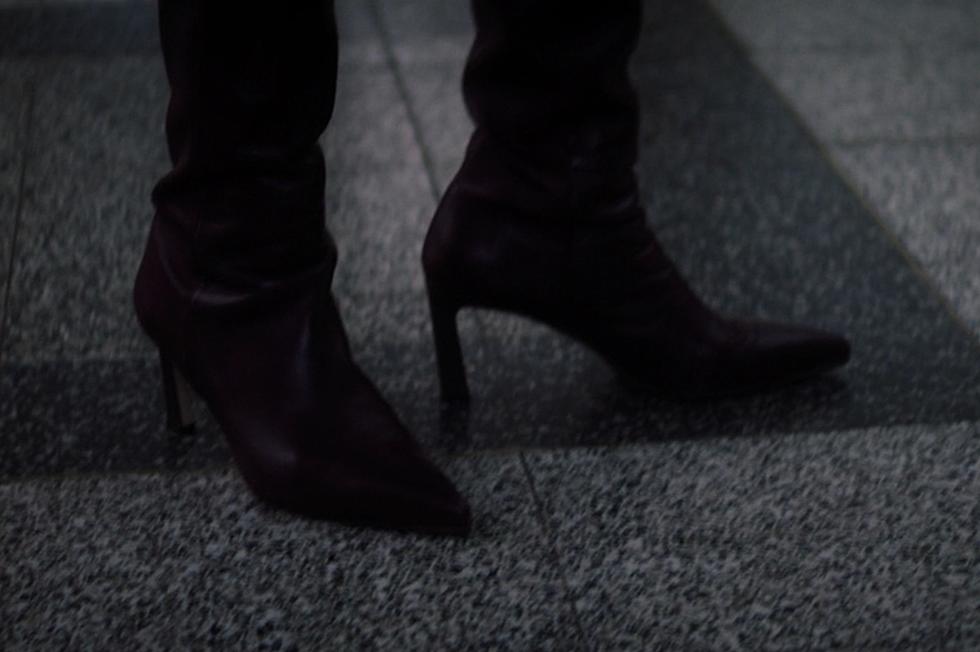![‘Black Widow’ #1 and the Hawkeyzation of Marvel Solo Titles [Review]](http://townsquare.media/site/622/files/2014/01/Black-Widow-top1.jpg?w=980&q=75)
‘Black Widow’ #1 and the Hawkeyzation of Marvel Solo Titles [Review]
Hawkeye has led the way for a solo title renaissance at Marvel. The publisher had of late placed an emphasis on team books -- mostly iterations of the Avengers and the X-Men -- and scaled back on solo titles, even reducing Spider-Man to just two books (one double shipping).
Then Hawkeye came along, and things changed. Thanks to the unique voice and style of the creative team, Matt Fraction and David Aja, a character who seemed unlikely to sustain a solo title became both a critical and commercial hit. Marvel has been trying to recapture that magic ever since, and the first of a new wave of solo titles hit stores this week; Black Widow #1 by Nathan Edmondson and Phil Noto.
If there's a formula to Hawkeye's success, it's "let the creators be themselves." Fraction and Aja did not produce the kind of superhero book that they could plug any hero into. Aja created a visual language that spoke to marksman Hawkeye's perception of space and time. Fraction paced and framed his story as the everyday adventures of a blue collar man. If Marvel has a "house style" it's a broad one, and even then Hawkeye sits far wide of it.
So the challenge for Marvel is to create other solo books that are just as quintessentially different, just as completely true to their lead characters, and yet somehow also Hawkeye. The brain-breaking internal memo might read, "Let's create a dozen new books that are unique just like that one."
Many of the first wave of Marvel Now solo books felt like well executed examples of traditional superhero fare, typically starring dependably commercial leading men. Aaron and Ribic's grandly epic Thor and Spurrier and Huat's X-Men: Legacy stood out as bespoke products.
The "all-new" wave of Marvel Now solo books is much more obvious in its desire to seed new Hawkeyes in the market. The original line had eleven solo titles, six of them starring Marvel heroes with current solo movie franchises. All-New Marvel Now has fourteen solo titles (and counting), and none of them can claim that kind of marquee support.
Like Hawkeye, these are second-stringers, and like Hawkeye they've been given creative teams that might impose a strong authorial vision: Felipe Smith and Tradd Moore on Ghost Rider; Zeb Wells and Mike Del Mundo on Elektra; Warren Ellis and Declan Shalvey on Moon Knight; G. Willow Wilson and Adrian Alphona on Ms Marvel; Dan Slott and Mike Allred on Silver Surfer. In every case the book seems to exist because of the talent attached; and might even cease to exist when that talent leaves.
And in every case the artist is at least as important as the writer. That feels like a departure for Marvel, which only a few years ago hailed its writing talent as "architects" of its universe. Now it seems that designers are just as important. There is no such book as "Matt Fraction's Hawkeye"; it is absolutely David Aja's Hawkeye as well, even when a guest artist takes over, because his influence is a constant presence. My hope and expectation is that we'll see a similar sense of a signature look from Tradd Moore, Mike Del Mundo, Declan Shalvey and all the rest.
And so we come to Black Widow #1, which relaunches the solo adventures of Russian superspy Natasha Romanova.
This is a book that absolutely claims the benefit of an artist with a unique and instantly recognizable style. Phil Noto doesn't seem like the obvious choice for a Black Widow solo series; his subjects often have a delicate, ephemeral quality to them. One fears they would collapse like underbaked souffles if forced to undertake an action sequence.
Yet it's the vulnerability in his work, the fragility of it, that makes Black Widow #1 effective. His painted art evokes a 70s cinema world of honeyed sunlight and faded palettes. It creates stillness, a suspended space where the reflexively ferocious Widow can excel.
As realized by Noto, the world of the Black Widow is cold when it needs to be, warm when it needs to be, and most of all hard when it needs to be. Much of the storytelling occurs through a gauzy filter, but the blacks stiffen when the pace or action demands it. In the book's key fight scene the color also flashes to danger-red as Widow takes down a team of goons -- but the black-ink intensity is just as emphatic when she's walking with purpose to an elevator shaft or "remembering" a painful past that supposedly is not real.
The pains of the past are crucial to this series -- Natasha's need to atone for her wrongs is the driving force of writer Nathan Edmondson's narrative -- and yet the facts of Natasha's past remain mysterious. There's a tension here between motive and mystery, and it's not clear which way Edmondson will go. If he reveals too much, it may take away some of the character's edge. Too little, and the story becomes abstract.
This first issue hints that the veracity of anything we learn may be left ambiguous, which would be a cunning way to play it, and an apt device for a book that steers readers away from the clarity of Black Widow the Avenger towards the uncertainty of Black Widow the covert operative.
That's the pitch laid out in Black Widow #1. It's not as immediately arresting or as different in feel as Hawkeye #1 was back in 2012, but it's an intriguing premise and a promising start for the Hawkeyzation of Black Widow, and for fans of Phil Noto -- old and new -- it's a superb showcase of his talents. If Marvel has another half dozen books on the horizon that capture their artists' styles so perfectly, it's going to be a very good year.
More From ComicsAlliance









